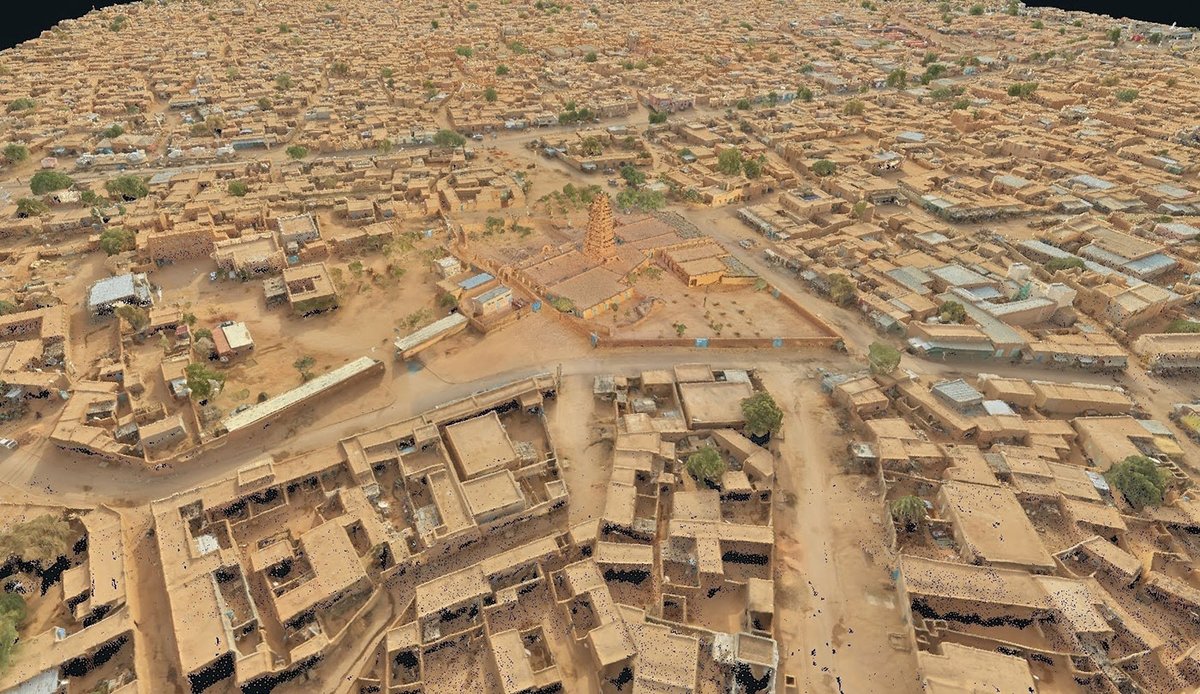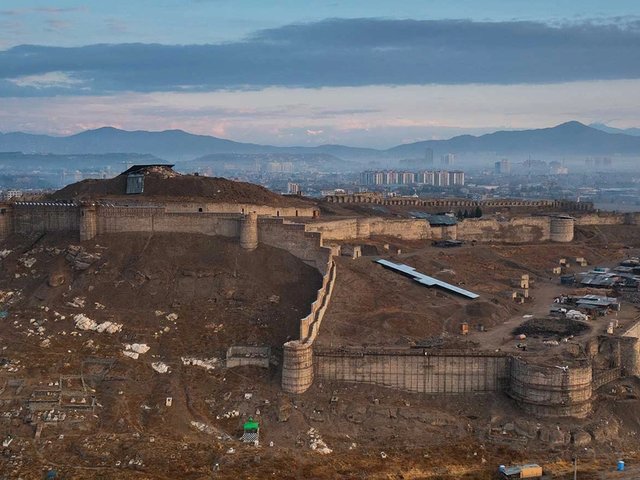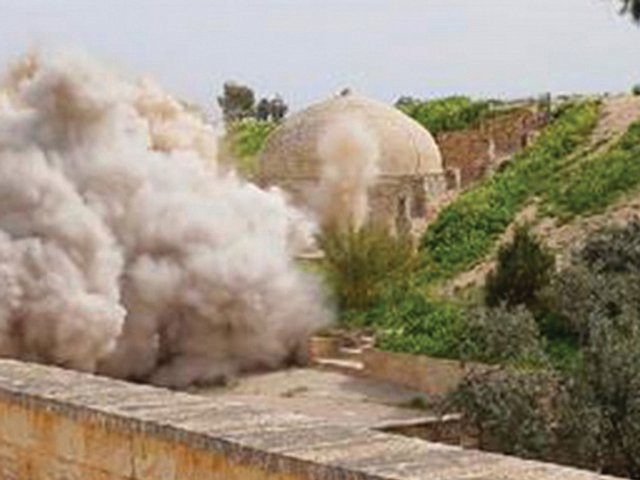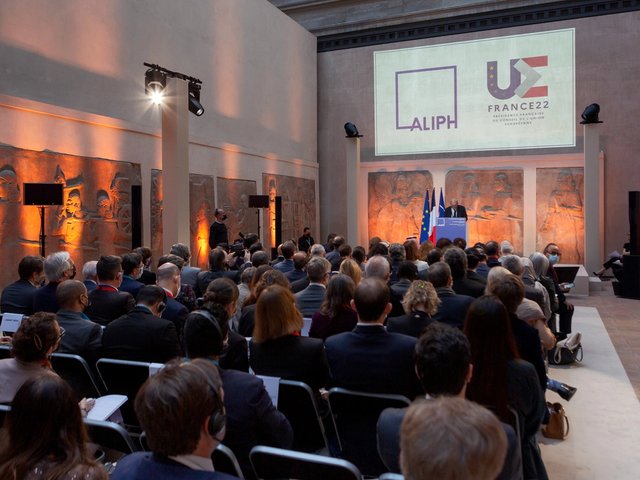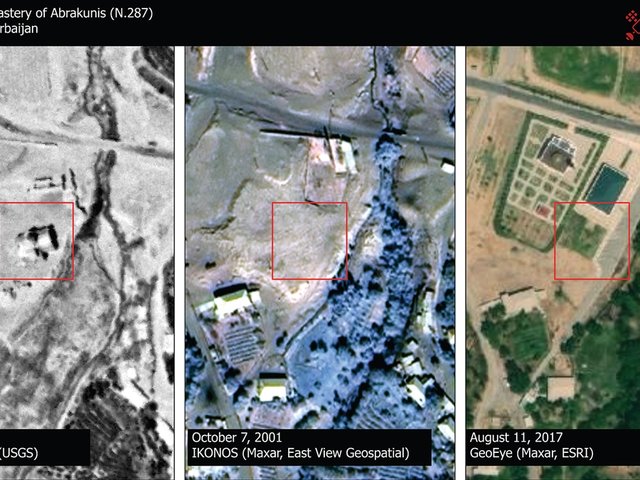The cultural heritage sector will soon have new artificial intelligence-powered tools to improve planning for the protection of sites from the effects of natural disasters, acts of war and environmental crises, thanks to a new Paris-based four-party collaboration, HeritageWatch.AI.
The independent, non-commercial body was launched on 10 February at the French Ministry of Culture as part of the Artificial Intelligence Action Summit in Paris. It was co-founded by its participants: the intergovernmental cultural heritage body Aliph (International alliance for the protection of heritage); the 3D modelling pioneers Iconem; the software and AI giant Microsoft; and Planet Labs PBC, a leading provider of daily satellite imagery.
The project aims to provide real-time data for heritage leaders by uniting the expertise of the four participating organisations. It will collect high-resolution satellite images of cultural heritage sites taken by Planet—a provider of global, daily satellite imagery using its fleet of some 200 observation satellites—and combine that data with Iconem’s specialisation in 3D-modelling of complex heritage sites, while sorting and classifying the data using computing resource provided by Microsoft’s AI for Good Lab.
Aliph will use this data to build on its capacity to support heritage bodies in times of emergency, work that has seen it disburse some $100m in grants to over 500 heritage projects in 41 countries since its foundation in 2017, while building a reputation for quick decision-making and rapid supply of funding. Aliph provided US$500,000 to protect the structural integrity of the Sursock Museum in Beirut within three weeks of the massive port blast in the Lebanese capital in 2020. It was likewise in contact with hundreds of institutions, libraries, and heritage sites in Ukraine in the first weeks of the Russian invasion in 2022 to help prepare them for the consequences of war.
In a launch statement the project supplied examples of potential projects, including observing “the progressive impact of desertification on earthen architecture in the Sahel region” of central Africa, and of rising sea levels “on coastal heritage, or the consequences of a hurricane on age-old sites”. The project aims to provide “robust tools with which they can support impacted communities before they are in crisis”. The project’s first round of funding has come from Microsoft’s initial pledge of US$1 million, over four years, with US$750,000 of in-kind services, and US$250,000 from Aliph.
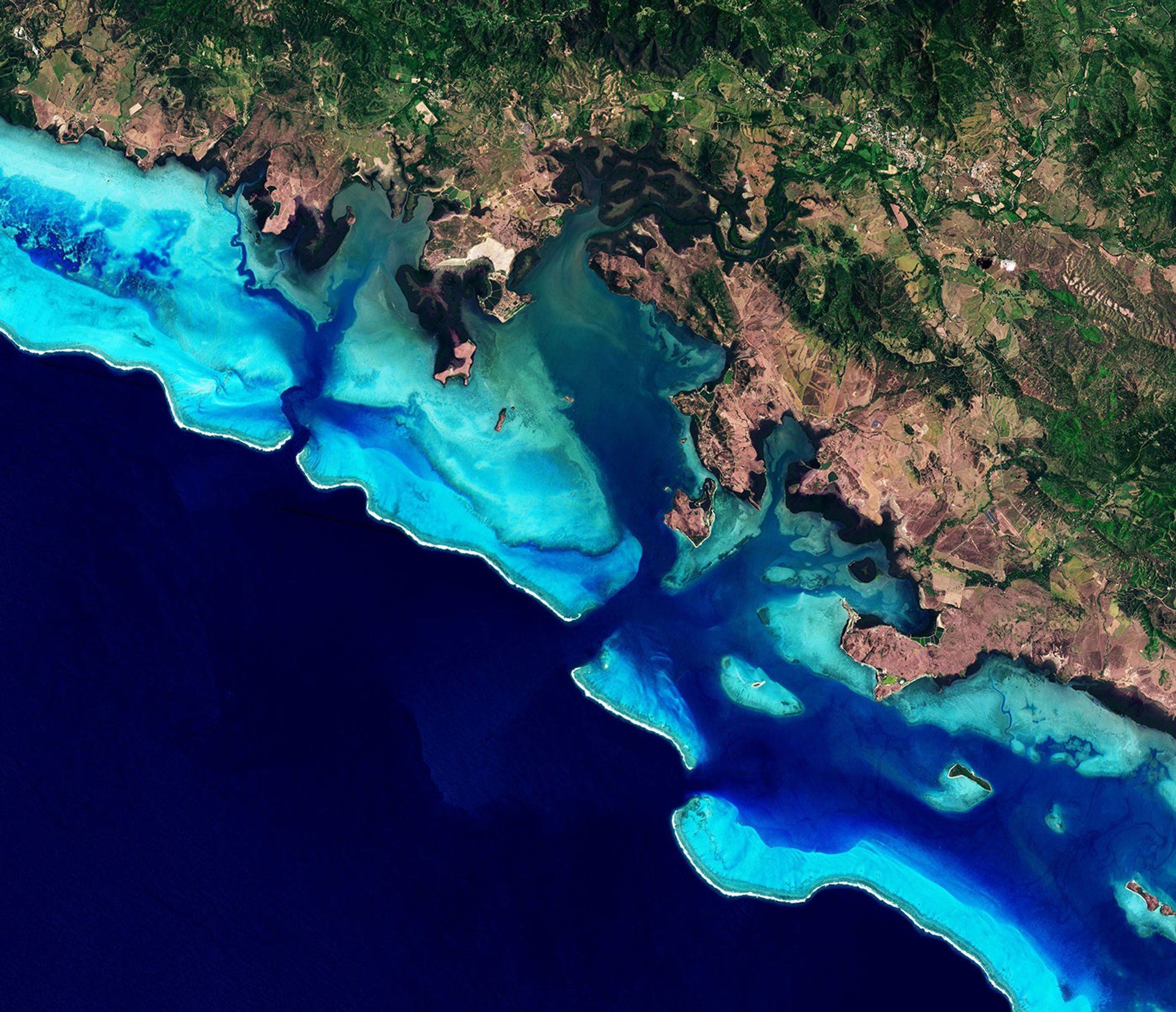
A satellite image of New Caledonia taken by Planet Labs, one of the founding partners of HeritageWatch.AI, for an existing Unesco project Courtesy: Planet
HeritageWatch.AI said in a launch statement that it will focus on three priorities: “Mapping climate change and natural disasters, such as earthquakes, floods, and fires, to predict their impact on cultural heritage; assessing the damage caused by natural disasters, climate change, or conflicts on cultural heritage; and contributing to the fight against the illicit trafficking of cultural goods, identifying looting activities.”
Planet, founded in 2010 by three Nasa scientists, provides satellite imagery daily to leading agriculture, forestry and intelligence clients. Founded in 2013, Iconem is an innovative French company that uses large-scale scanning to create photorealistic 3D digital twins of historic monuments that act as analytical tools for the scientific community, for conservation and restoration projects.
The Geneva-based foundation Aliph was launched as a shared initiative from France and the United Arab Emirates to build on the collaboration evident in the opening of Louvre Abu Dhabi in 2017 and also in response to the threat posed by Islamic State (Isis). It is a public-private partnership involving nine countries (China, Cyprus, France, Kuwait, Luxembourg, Morocco, Saudi Arabia, the United Arab Emirates, and Uzbekistan) and three private donors (Dr. Thomas S. Kaplan, Getty Trust, and Fondation Gandur pour l’Art). The biggest state donors are France (US$60m), Saudi Arabia (US$50m) and the United Arab Emirates (US$39m).
“Usually in the event of a disaster,” Lazare Eloundo Assomo, director of World Heritage at Unesco, said in an announcement video for HeritageWatch.AI, “we have difficulty to access data on time in the affected site.” This emphasis on live information was underlined by Bastien Varoutsikos, Director of Strategy, Aliph who said the partnership with Microsoft and HeritageWatch.AI would be a game-changer “giving us access to real-time data and monitoring as well as forecasting capacity so that we can develop even more robust and rapid responses.” “All of this monitoring is made possible by leveraging Microsoft’s latest technology,” Juan M. Lavista Ferres, corporate vice-president and chief data scientist, AI for Good Lab at Microsoft said. “With AI we can join forces to better protect the legacies of our past and preserve them for future generations.”
“By working together,” Andrew Zolli, chief impact officer of Planet, said “we can significantly enhance the responsiveness and efficiency of those dedicated to protecting our cultural heritage worldwide.”


